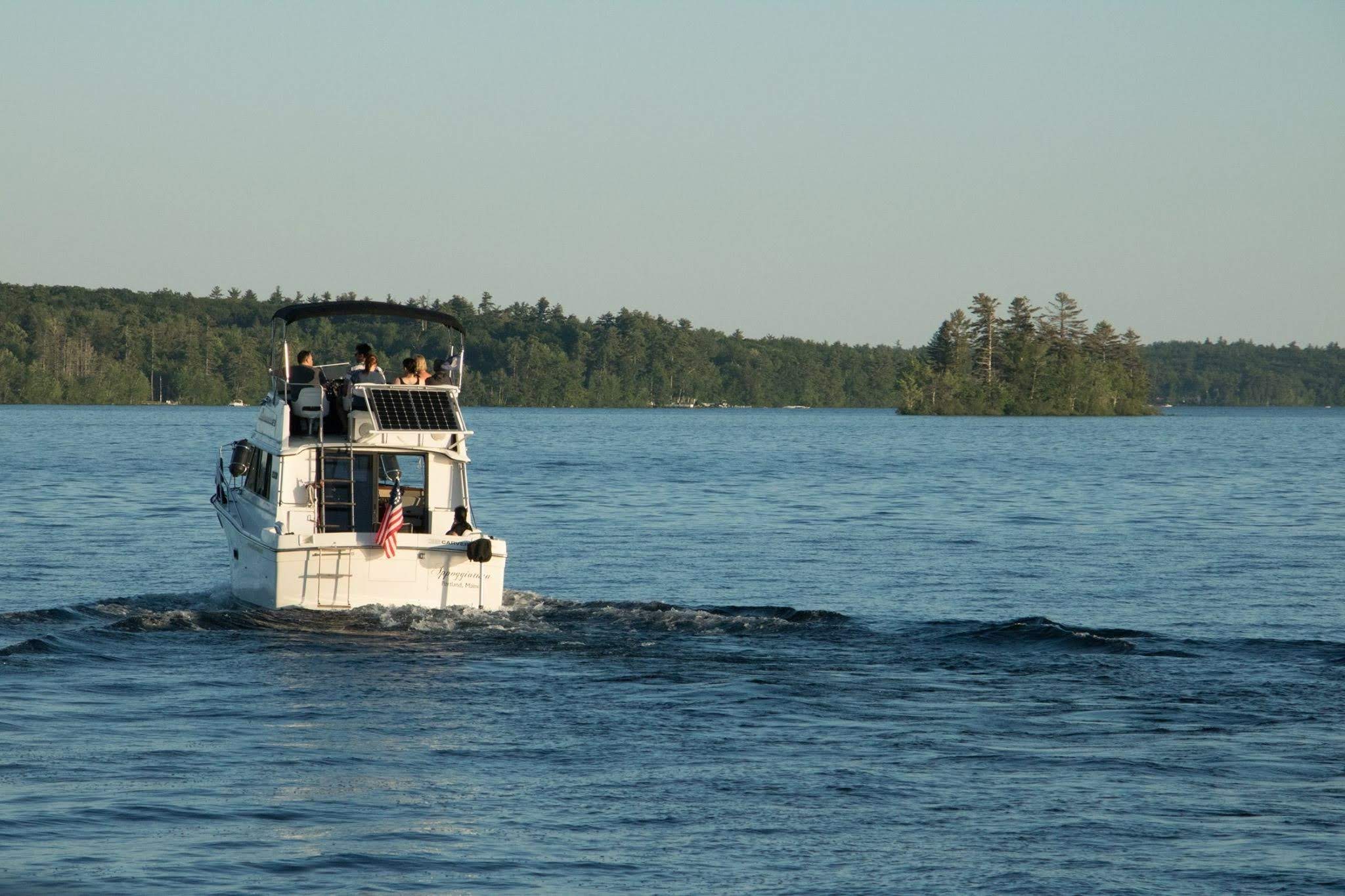The Great Loop is one of the most iconic cruising adventures in North America, covering 6,000–7,000 miles of interconnected waterways that span the eastern U.S. and Canada. For many, it represents the journey of a lifetime—a chance to explore scenic rivers, historic towns, vibrant cities, and peaceful anchorages from the comfort of their own vessel.
It’s no wonder the Loop attracts dreamers. And in recent years, more and more of those dreamers are first-time boaters. Perhaps you’ve just retired (or will be retiring soon) or taken on that dream job you can do from anywhere with a Starlink connection. You’ve got the time, you’ve got the means, and you’ve discovered the Loop. You’re eager to cast off.
But here’s the truth that seasoned mariners know and too few newcomers hear: if you’ve never boated before, jumping straight into the Loop with a six-figure yacht and minimal experience is one of the fastest ways to drain your savings and set yourself up for failure.
People who take this path often find themselves overwhelmed. They might struggle with docking. They could foul props. They may panic in winds and currents. Some burn out before completing the trip. Or worse, they might suffer accidents that damage their boat, other boats, cause injury, or void their insurance. The Loop can be forgiving in parts, but it is still a serious undertaking. Weather, tides, winds, mechanical failures, and navigation all demand competency—not just enthusiasm.
The Problem of the Checkbook Captain
It’s become a common term in the cruising world: the “checkbook captain.” These are boaters who try to compensate for a lack of experience by throwing money at problems—hiring delivery captains, mechanics, and deckhands to bridge the experience gap. But even with such help, the stresses and risks remain. More importantly, insurance companies know how dangerous this can be.
Inexperienced yacht owners with expensive boats are now struggling to get covered. Or they’re paying enormous premiums. Many insurers will require boaters to complete documented training with a licensed captain before they’ll underwrite a policy. Some owners feel pressured to fudge their experience levels to get a policy in place quickly—only to find themselves in a coverage quandary if something goes wrong and the truth inevitably comes out after a claim.
A Smarter Way to Start
If you’ve never owned a boat before—or even if you’ve only captained smaller outboards, pontoon boats, or bowriders—there’s a far better on-ramp to the Great Loop.
Buy a practice boat.
Specifically, look for a well-worn, gasoline-powered cruiser around 30–35 feet in length. Be sure and get a basic marine survey done before handing over cash (your insurance company will require one before underwriting anyway). These boats can often be found in the $15,000–30,000 range—affordable, especially considering they’ve already fully depreciated. Most are likely twin-engine inboards, which are easy to learn on and often easier to insure. Unlike diesels, parts and labor are generally cheaper, and unlike pod/z-drives or outdrives, they don’t require complex seasonal haul-outs or underwater work.
Run this boat for a season or two:
- Get underway as often as you can.
- Join your local Power Squadron and yacht club.
- Take classes in seamanship and navigation.
- Learn to maintain your systems.
- Start using navigation apps like Argo to plan routes, monitor progress, and connect with fellow boaters.
- Get comfortable reading charts, understanding tides, currents, and winds, and planning passages.
- Practice docking in all conditions.
- Learn to handle lines.
- Make passing arrangements with other mariners on the VHF.
Fuel up. Pump out. Anchor. Run aground (gently). Call for help. Fix the head.
You’ll do all these things on the Loop. Best to figure them out now—on a boat that doesn’t cost six figures and doesn’t make you panic every time you’re within ten feet of something.

Recommended Practice Boats:
| Make/Model | Length | Fuel Type | Typical Price (USD) | Notes |
|---|---|---|---|---|
| Carver 3227 | 32′ | Gas | $15,000–$30,000 | Common twin inboard gas cruiser, well-suited for short-term use. |
| Bayliner 3270 | 32′ | Gas | $12,000–$25,000 | Popular, affordable; diesel versions are rare but Loopable. |
| Bayliner 3270 (Diesel) | 32′ | Diesel | $18,000–$30,000 | Loop-friendly and budget-conscious. |
| Bayliner 3870 / 3818 / 3888 | 38′ | Gas/Diesel | $20,000–$40,000 | Same hull; diesel versions Loopable and economical. |
| Sea Ray 340 Sedan Bridge | 34′ | Gas | $18,000–$35,000 | Spacious, reliable with easy access to parts. |
| Chris Craft Catalina 350 | 35′ | Gas | $18,000–$35,000 | Good visibility and interior space, popular in 1980s. |
| Silverton 34 Convertible | 34′ | Gas | $15,000–$28,000 | Easy-to-maintain design with upper helm and decent livability. |
| Cruisers Yachts 3375 | 33′ | Gas | $20,000–$35,000 | Express cruiser, less headroom but easier handling. |
| Wellcraft 3200 St. Tropez | 32′ | Gas | $12,000–$25,000 | Affordable, common cruiser with decent build quality. |
| Wellcraft 3000 | 30′ | Gas | $10,000–$22,000 | Smaller and simpler, but still useful for training and inland cruising. |
Learning What You Actually Want
As you gain experience, you’ll start to realize what truly matters to you in a Loop boat.
Maybe you thought a 45-footer with two staterooms was ideal—but you discover you prefer a smaller vessel that might be easier to handle or easier on the fuel budget. Perhaps you assumed a flybridge was essential, but you find you actually enjoy the shade and close quarters of a pilothouse. Maybe you were fine with a wet head (a combined toilet and shower space), but after some time aboard, you realize you can’t live without a separate shower. Or maybe you thought you’d spend most nights at anchor, only to discover you’ll want thrusters to make docking in marinas easier.
As you learn the ropes, you’ll also get a clearer sense of your preferences for fuel type, galley layout, tankage, storage, and helm ergonomics.

An Easy Exit—Or a Surprisingly Good Fit
When you’re ready to step up to your Loop boat, just sell the practice boat. If you bought it right, you can often sell it for about what you paid—especially if you kept up with basic maintenance. These boats are already depreciated and there’s always demand for affordable cruisers.
That said, don’t be surprised if you end up liking your practice boat enough to take it on the Loop anyway. Yes, it may burn more fuel than a trawler or diesel cruiser—but even a generous fuel budget doesn’t come close to offsetting the upfront cost of a six-figure yacht you’re not comfortable handling. Many boaters have happily completed the Loop in boats others would call “too small” or “too basic”—because they knew their systems, trusted their skills, and were having the time of their lives.
In the end, the practice boat pays for itself in experience, confidence, and avoided mistakes. You’ll approach the Loop with clarity and competence—not confusion and chaos. You’ll enjoy the adventure more, insure your boat more easily, and avoid the fate that too many eager new boaters face.
The Loop is a once-in-a-lifetime journey. Make sure your lifetime of boating starts the right way.





